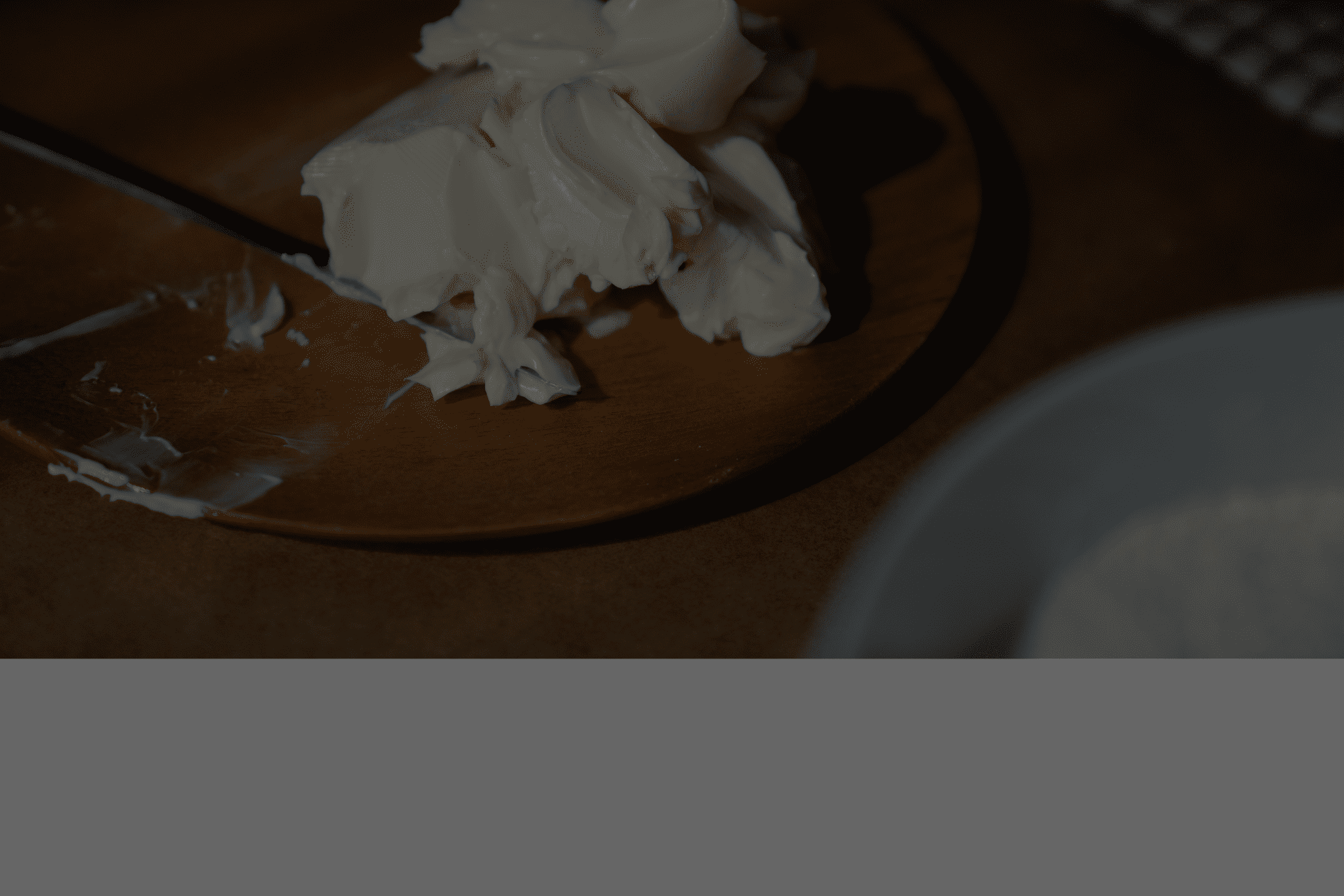S
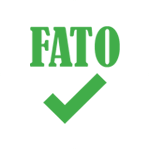
Most processed food have little, or no fat added
Statistics demonstrate that industrialized food does not have fats added. Industrialized products from meat, fished and by-products, dairy and chocolates, among others, contain natural fat from their own raw material. Industrialized bakery and confectionery products, including snacks, usually have fat in the preparation, as well as in the preparation of similar products outside the industry, at homes, bakeries, confectionery stores, and restaurants.
Check the data about the content of fat in the industrialized food:
- The studies conducted by Ital, about the content of nutrients stated in the labels of many industrialized products demonstrate that, generally, the quantities of saturated fat vary significantly, there are products with well reduced contents, and most of the products do not have relevant trans fat content.
- The trend to reduce the quantity of fat in the industrialized food
- Corporate initiatives to reduce saturated and trans fat.
- Challenges to reduce fats: functions in the processing.
Bread
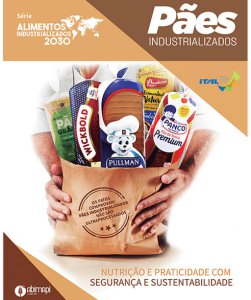 In 2019, Ital and ABIMAPI conducted a study about nutrients and ingredients of 70 products marketed in Brazil, obtained the following results. The industrialized white loaves of bread have, in average, quantities of saturated fat equal to the average quantity of French bread. Most whole loaf of breads have more saturated fat than the whole homemade bread; however, there are many products without saturated fats. The quantities of saturated fats can be even lower than those of non-industrialized bread. Whole loaves of bread present a higher saturated fat content, but it is not a rule of thumb, as there are several products without saturated fat. Fats added to the analyzed product vary among plant-based oils, margarine, butter, lard, etc. Hydrogenated fat is used in 9 products of the sample.
In 2019, Ital and ABIMAPI conducted a study about nutrients and ingredients of 70 products marketed in Brazil, obtained the following results. The industrialized white loaves of bread have, in average, quantities of saturated fat equal to the average quantity of French bread. Most whole loaf of breads have more saturated fat than the whole homemade bread; however, there are many products without saturated fats. The quantities of saturated fats can be even lower than those of non-industrialized bread. Whole loaves of bread present a higher saturated fat content, but it is not a rule of thumb, as there are several products without saturated fat. Fats added to the analyzed product vary among plant-based oils, margarine, butter, lard, etc. Hydrogenated fat is used in 9 products of the sample.
Cookies
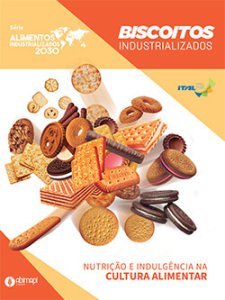 In 2020, Ital and ABIMAPI conducted a study about nutrients and ingredients of 243 products marketed in Brazil, obtained the following results. Generally, the quantities of saturated fats in cookies vary a lot among the different types of products, there are products containing from 0.0 g to 6.0 g, in portions of 30 grams. There are diet/light versions with reduction of calories and fats. The fat added in the analyzed products vary among plant-based oils (sunflower, sesame, palm, soybean, palm kernel), olive oil, butter, margarine, animal-based fat, etc. Hydrogenated fat is used in 48 products of the sample. Interesterified fat in 3 products.
In 2020, Ital and ABIMAPI conducted a study about nutrients and ingredients of 243 products marketed in Brazil, obtained the following results. Generally, the quantities of saturated fats in cookies vary a lot among the different types of products, there are products containing from 0.0 g to 6.0 g, in portions of 30 grams. There are diet/light versions with reduction of calories and fats. The fat added in the analyzed products vary among plant-based oils (sunflower, sesame, palm, soybean, palm kernel), olive oil, butter, margarine, animal-based fat, etc. Hydrogenated fat is used in 48 products of the sample. Interesterified fat in 3 products.
Cakes
 In 2021, Ital and ABIMAPI conducted a study about nutrients and ingredients of 210 products marketed in Brazil, obtained the following result. Generally, the quantities of SATURATED FATS in cakes vary a lot among the different types of products, there are products containing from 0.0 g to 8.6 g. The quantity of TRANS FAT in cakes varies significantly according to the ingredients present in its formulation. Most products analyzed have a statement of exemption of trans fat. The fat added in the analyzed products vary among soybean oil, canola, palm, sunflower, coconut, corn, orange, hydrogenated plant-based oil, margarine, and palm oil fat. Hydrogenated fat is used in 48 products.
In 2021, Ital and ABIMAPI conducted a study about nutrients and ingredients of 210 products marketed in Brazil, obtained the following result. Generally, the quantities of SATURATED FATS in cakes vary a lot among the different types of products, there are products containing from 0.0 g to 8.6 g. The quantity of TRANS FAT in cakes varies significantly according to the ingredients present in its formulation. Most products analyzed have a statement of exemption of trans fat. The fat added in the analyzed products vary among soybean oil, canola, palm, sunflower, coconut, corn, orange, hydrogenated plant-based oil, margarine, and palm oil fat. Hydrogenated fat is used in 48 products.
Doughs
 In 2021, Ital and ABIMAPI conducted a study about nutrients and ingredients of 269 products marketed in Brazil, obtaining the following results. Generally, doughs are not products of low saturated fat. However, the quantities of SATURATED FATS in the doughs vary significantly according to the ingredients present in their formulation. Among the alternatives to reduce saturated fats, there are the mixtures or fillings with more vegetables, meat, and less fatty or its replacement for similar products. The quantities of TRANS FATS in the doughs vary significantly according to the ingredients present in their formulation. Most doughs analyzed have a statement of exemption of trans fat. Fats added to the analyzed products vary among soybean, palm, sunflower, margarine, plant-based cream, duck fat, chicken fat.
In 2021, Ital and ABIMAPI conducted a study about nutrients and ingredients of 269 products marketed in Brazil, obtaining the following results. Generally, doughs are not products of low saturated fat. However, the quantities of SATURATED FATS in the doughs vary significantly according to the ingredients present in their formulation. Among the alternatives to reduce saturated fats, there are the mixtures or fillings with more vegetables, meat, and less fatty or its replacement for similar products. The quantities of TRANS FATS in the doughs vary significantly according to the ingredients present in their formulation. Most doughs analyzed have a statement of exemption of trans fat. Fats added to the analyzed products vary among soybean, palm, sunflower, margarine, plant-based cream, duck fat, chicken fat.
Pizzas
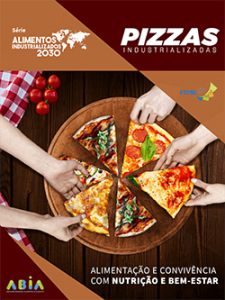 In 2020, Ital and ABIA conducted a study about nutrients and ingredients of 56 products marketed in Brazil, obtained the following results. Generally, pizzas are not low products in terms of saturated fats, considering that it is an intrinsic characteristic of raw materials used. For example, mozzarella has a relative quantity of saturated fats of, approximately, 60% of the total lipids content. However, the quantities of SATURATED FATS in pizzas vary significantly according to the ingredients present in their formulation. Among the alternatives to reduce the saturated fat, there are the toppings with more vegetables, less fatty meat and cheese or its replacement for similar products in which it is possible to control the fatty acids profile used in order to present a relative quantity of saturated fat up to 20% of the total lipids content.
In 2020, Ital and ABIA conducted a study about nutrients and ingredients of 56 products marketed in Brazil, obtained the following results. Generally, pizzas are not low products in terms of saturated fats, considering that it is an intrinsic characteristic of raw materials used. For example, mozzarella has a relative quantity of saturated fats of, approximately, 60% of the total lipids content. However, the quantities of SATURATED FATS in pizzas vary significantly according to the ingredients present in their formulation. Among the alternatives to reduce the saturated fat, there are the toppings with more vegetables, less fatty meat and cheese or its replacement for similar products in which it is possible to control the fatty acids profile used in order to present a relative quantity of saturated fat up to 20% of the total lipids content.
Despite some products contain quantities above the VDR of 0.2 g, the most of the analyzed pizzas had a statement of exemption of trans fat. The quantity of TRANS FAT in pizzas vary a lot according to the ingredients present in its formulation, considering that it is an intrinsic characteristic of raw materials used. The variation in quantities of trans fat found in different products is largely related to the quantity of mozzarella cheese used, as this type of raw material usually have contents of trans fat above 1% intrinsic to the fat present in cow milk.
Fat added to the analyzed products vary among soybean, palm oil, olive oil, margarine.
Yogurt
 In 2020, o Ital and Viva Lácteos conducted a study about nutrients and ingredients of 150 products marketed in Brazil, obtained the following results. Most analyzed product can be considered as low content of SATURATED FAT and, even in the other products, the quantities of sodium are not so relevant based on the daily intake recommendations of 22 g. It is important to note that saturated fat is not a chemically homogeneous group and that the milk fat contains fatty acids, such as, for example, butyric acid, vaccenic acid, conjugated linoleic acid and alpha linoleic acid, which present benefits to the health.
In 2020, o Ital and Viva Lácteos conducted a study about nutrients and ingredients of 150 products marketed in Brazil, obtained the following results. Most analyzed product can be considered as low content of SATURATED FAT and, even in the other products, the quantities of sodium are not so relevant based on the daily intake recommendations of 22 g. It is important to note that saturated fat is not a chemically homogeneous group and that the milk fat contains fatty acids, such as, for example, butyric acid, vaccenic acid, conjugated linoleic acid and alpha linoleic acid, which present benefits to the health.
Fat added to the analyzed products is only milk cream.
Plant-based beverages
 In 2022, Ital and Good Food Institute conducted a study about nutrients and ingredients of 178 products marketed in Brazil, obtained the following results. The quantities of SATURATED FAT vary significantly among the analyzed products, depending on the types of vegetable base to which they are prepared and the ingredients mixed. In the total sample, 27.0% of beverages non containing saturated fats, 82.6% present values up to 1.5 g/200 ml; and 97.8% are below 6 g, per portion of 200 ml. The 4 beverages that present value above 6 g/200 ml are prepared with coconut, a fruit with natural presence of saturated fats. The CEREAL-based beverages (97.1%) and LEGUMES-based beverages (90.0%) are those with the highest number of products with up to 1.5 g/200 ml. Generally, plant-based beverages are not products that have TRANS FAT. In the sample of 178 plant-based beverages, only one product based on LEGUMES state a quantity of 0.1 g of TRANS FAT, while the other state 0,0 g, per portion of 200 ml.
In 2022, Ital and Good Food Institute conducted a study about nutrients and ingredients of 178 products marketed in Brazil, obtained the following results. The quantities of SATURATED FAT vary significantly among the analyzed products, depending on the types of vegetable base to which they are prepared and the ingredients mixed. In the total sample, 27.0% of beverages non containing saturated fats, 82.6% present values up to 1.5 g/200 ml; and 97.8% are below 6 g, per portion of 200 ml. The 4 beverages that present value above 6 g/200 ml are prepared with coconut, a fruit with natural presence of saturated fats. The CEREAL-based beverages (97.1%) and LEGUMES-based beverages (90.0%) are those with the highest number of products with up to 1.5 g/200 ml. Generally, plant-based beverages are not products that have TRANS FAT. In the sample of 178 plant-based beverages, only one product based on LEGUMES state a quantity of 0.1 g of TRANS FAT, while the other state 0,0 g, per portion of 200 ml.
Juice and other non-carbonated beverages
 In 2020, Ital and ABIR conducted a study about nutrients and ingredients of 217 products marketed in Brazil, obtained the following results. Generally, juices, nectars, refreshments and liquid food do not have relevant quantities of FAT. In the TOTAL of the sample (217 products), 90.3% inform zero Fat content, while the remaining have a content equal or higher than 5 g/200 ml, considering the LOW content according to the legislation (lower than 3 g of total fats per 100 ml of product).
In 2020, Ital and ABIR conducted a study about nutrients and ingredients of 217 products marketed in Brazil, obtained the following results. Generally, juices, nectars, refreshments and liquid food do not have relevant quantities of FAT. In the TOTAL of the sample (217 products), 90.3% inform zero Fat content, while the remaining have a content equal or higher than 5 g/200 ml, considering the LOW content according to the legislation (lower than 3 g of total fats per 100 ml of product).
Ice creams
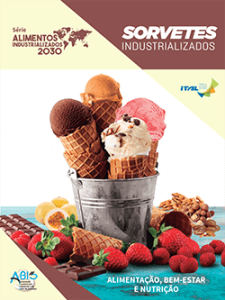 In 2021, Ital and ABIS conducted a study about nutrients and ingredients of 180 products marketed in Brazil, obtained the following results. The quantities of SATURATED FAT in ice creams vary significantly according to the ingredients present in their formulation. In average, in portions of 60 g, products have 2,9 g of SATURATED FAT (14.4% of VDR); the product with the highest content has 8.4 g (42.0% of VDR) and the product with the lowest content has 0 g (0% of VDR).
In 2021, Ital and ABIS conducted a study about nutrients and ingredients of 180 products marketed in Brazil, obtained the following results. The quantities of SATURATED FAT in ice creams vary significantly according to the ingredients present in their formulation. In average, in portions of 60 g, products have 2,9 g of SATURATED FAT (14.4% of VDR); the product with the highest content has 8.4 g (42.0% of VDR) and the product with the lowest content has 0 g (0% of VDR).
In average, in portions of 100 g, products have 4,7 g of SATURATED FAT (23.7% of VDR); the product with the highest content has 14.0 g (70.0% of VDR) and the product with the lowest content has 0 g (0% of VDR). Fat added to the analyzed products is only milk cream.
Hamburgers
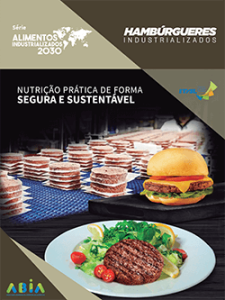 In 2021, Ital and ABIA conducted a study about nutrients and ingredients of 90 products marketed in Brazil, obtained the following results. The quantities of SATURATED FAT in hamburgers vary significantly according to the ingredients present in their formulation. Generally, due to the natural raw materials composition, meat products have higher quantities in comparison with vegetables.
In 2021, Ital and ABIA conducted a study about nutrients and ingredients of 90 products marketed in Brazil, obtained the following results. The quantities of SATURATED FAT in hamburgers vary significantly according to the ingredients present in their formulation. Generally, due to the natural raw materials composition, meat products have higher quantities in comparison with vegetables.
It is important to note that fat, as well as carbohydrates, as it is a source of energy, it provides essential fatty acids, necessary for the development, and it makes the absorption of fat-soluble vitamins (A, D, E and K) easier by intestine. In addition, it play an important function of energy ans structural power. On the other hand, the excessive consumption of saturated fat is associated to the increase of bad cholesterol or LDL levels, which can be adhered to the artery and lead to cardiovascular diseases, such as heart attack and HVAC (stroke). For that reason, World Health Organisation (WHO) establishes limits for its consumption. The ideal is the intake of saturated fat not higher than 10% of calories ingested on a day, equivalent to about 21 g. For those who are subject to a cardiac risk, the suggested value is 7%, or about 15 g.
The quantities of TRANS FAT in hamburgers vary significantly according to the ingredients present in their formulation, being present in only a smaller portion (28%) of meat products of the analyzed sample. Trans fats are naturally present in small quantities in meat and ruminant animals mil, such as cow and sheep. It happens because certain bacteria present in the rumen of these animals promote the bio-hydrogenation fatty acids these animals intake. In addition to meat, there are products that use plant-based fat and oils (in the sample, 25 products use plant-based oils and fats and 1 margarine) in the hamburgers preparation, which also contributes to add a trans fat content above 0.2 g. That is because trans fat can be generated in some industrial processes, mainly in partial hydrogenation of plant-based or animal-based oils. Fats added to the analyzed products vary among beef, pork and chicken meat, bacon, margarine, plant-based soybean fat, palm fat, cotton oil, soybean oil, coconut oil, sunflower oil, extra-virgin olive oil.
Chocolates
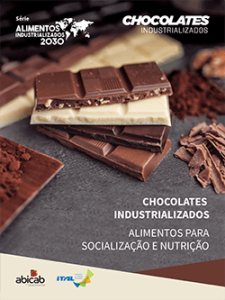 In 2022, Ital and ABICAB conducted a study about nutrients and ingredients of 483 products marketed in Brazil, obtained the following results. In average, chocolate has SATURATED FAT in its composition, mainly from cocoa; however, the quantities can vary according to the ingredients used. The quantities of TRANS FATS in chocolates vary significantly according to the ingredients present in their formulation. Most products analyzed have a non-significant quantities of trans fat. According to the analyzed sample, most industrialized chocolates do not have TRANS FAT. For example, among the 483 products of the total sample, only 4 presented quantities higher than 0.1 g, due to the fillings composition, and not by the chocolate natural characteristics. The fat added in the analyzed products vary among soybean, palm, sunflower, coconut and palm kernel, butter, margarine and plant-based fat. Other fats of common industrial use: hydrogenated plant-bases fat (in 6 products), fractionated plant-based fat (in 8 products) and interesterified plant-based fat in 12 products.
In 2022, Ital and ABICAB conducted a study about nutrients and ingredients of 483 products marketed in Brazil, obtained the following results. In average, chocolate has SATURATED FAT in its composition, mainly from cocoa; however, the quantities can vary according to the ingredients used. The quantities of TRANS FATS in chocolates vary significantly according to the ingredients present in their formulation. Most products analyzed have a non-significant quantities of trans fat. According to the analyzed sample, most industrialized chocolates do not have TRANS FAT. For example, among the 483 products of the total sample, only 4 presented quantities higher than 0.1 g, due to the fillings composition, and not by the chocolate natural characteristics. The fat added in the analyzed products vary among soybean, palm, sunflower, coconut and palm kernel, butter, margarine and plant-based fat. Other fats of common industrial use: hydrogenated plant-bases fat (in 6 products), fractionated plant-based fat (in 8 products) and interesterified plant-based fat in 12 products.
Peanut
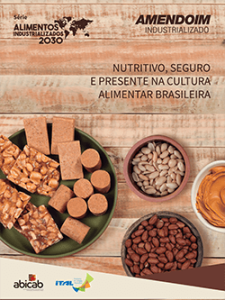 In 2022, Ital and ABICAB conducted a study about nutrients and ingredients of 416 products marketed in Brazil, obtained the following result. The quantities of SATURATED FAT vary significantly among the analyzed products, which can be toasted, fried, with a wide variety of raw materials used in toppings and other preparations. In the total sample, 12.0% of products present values up to 1.5 g; 8.4% with up to 4.5 g; and 17.6% from 4.5 to 10.5 g, in portions of 50 g. Peanut in grain contain, naturally, saturated fats, however in lower quantities to those verified in mono and polyunsaturated, being free form trans fat. The analysis of the sample of 416 industrialized products revealed that 98.8% of these products stated 0.0 g, per portion of 50 g. Only 5 products, from CANDY category, presented quantities within 0.5 g and 4.2 g of TRANS FAT (in portions of 50 g). Fats added to the analyzed products vary among plant-based oil, soybean, sunflower, cotton, coconut, peanut oil, virgin olive oil, margarine. Other more common fats of industrial use: hydrogenated plant-based (in 6 products) and fractionated plant-based (in 2 products).
In 2022, Ital and ABICAB conducted a study about nutrients and ingredients of 416 products marketed in Brazil, obtained the following result. The quantities of SATURATED FAT vary significantly among the analyzed products, which can be toasted, fried, with a wide variety of raw materials used in toppings and other preparations. In the total sample, 12.0% of products present values up to 1.5 g; 8.4% with up to 4.5 g; and 17.6% from 4.5 to 10.5 g, in portions of 50 g. Peanut in grain contain, naturally, saturated fats, however in lower quantities to those verified in mono and polyunsaturated, being free form trans fat. The analysis of the sample of 416 industrialized products revealed that 98.8% of these products stated 0.0 g, per portion of 50 g. Only 5 products, from CANDY category, presented quantities within 0.5 g and 4.2 g of TRANS FAT (in portions of 50 g). Fats added to the analyzed products vary among plant-based oil, soybean, sunflower, cotton, coconut, peanut oil, virgin olive oil, margarine. Other more common fats of industrial use: hydrogenated plant-based (in 6 products) and fractionated plant-based (in 2 products).


